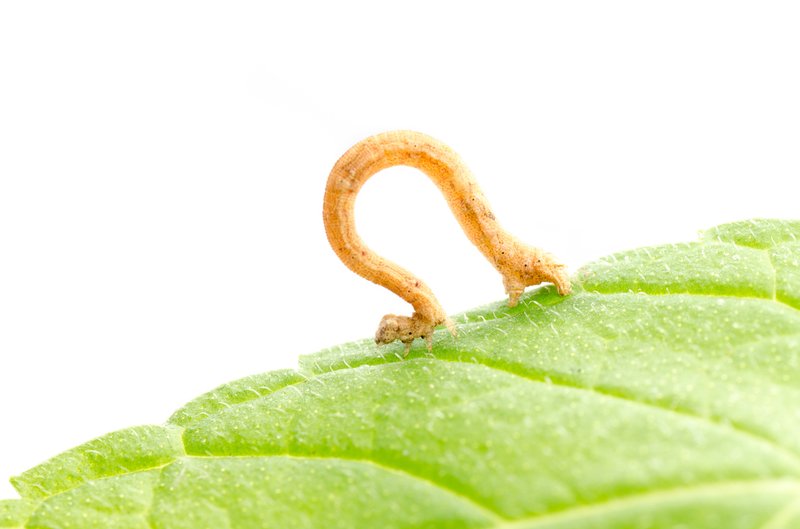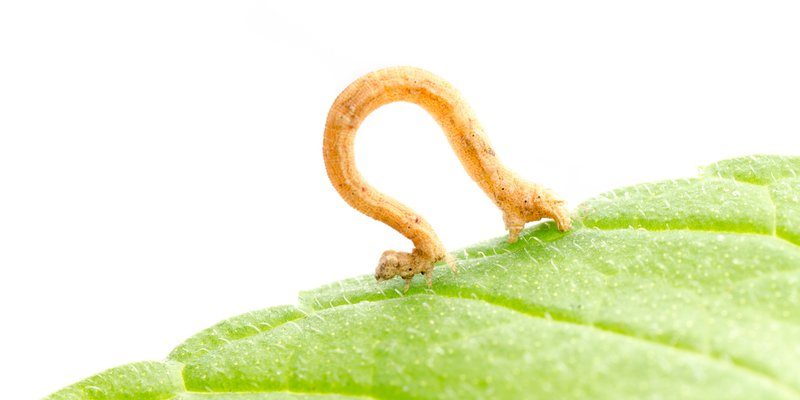
Inchworms, also known as loopers, are the larvae of moths from the Geometridae family. They have a distinct way of moving, which resembles measuring with a ruler—hence the name. While they might be a common sight in gardens, inchworms can be a food source for different bird species. But farming them for this purpose? That’s the question we’re tackling. Farming inchworms could be a sustainable and cost-effective way to ensure your birds are getting nutritious food. Let’s explore the ins and outs of inchworm farming and see if it’s right for you.
What Are Inchworms, and Why Are They Good for Birds?
Inchworms are intriguing little creatures. They typically measure around 1 to 2 inches long and come in various shades of green, brown, or even tan. Their distinctive looping movement is not only charming but also makes them hard to spot until they’re right there in front of you. This unique movement is a survival tactic that helps them blend into leaves and avoid predators.
When it comes to nutrition, inchworms pack a punch for birds. They’re high in protein, which is essential for growth and energy, especially for nesting birds in the spring. Birds like chickadees, wrens, and even larger species such as robins and blue jays appreciate the soft, tender flesh of inchworms. If you’re looking to attract these lovely birds to your yard, providing inchworms could be a game changer.
Here’s the thing—by farming inchworms, you not only provide food for your feathered companions but also create a mini ecosystem in your backyard. It’s a natural and green way to supplement their diets while enjoying the benefits of biodiversity.
The Basics of Inchworm Farming
Farming inchworms isn’t as complicated as it sounds. With a little patience and the right setup, you can create an ideal environment for them to thrive. The first step in inchworm farming is choosing the right habitat. A basic container—like a plastic bin or a glass jar—works well. Just make sure it has some air holes to ensure proper ventilation.
Next, think about food. Inchworms primarily eat leaves, so providing fresh foliage is crucial. They enjoy a variety of leaves from trees such as oak, maple, and elm. You’ll need to replace the leaves regularly to keep them fresh and prevent mold growth. This setup not only gives inchworms a cozy home but also ensures they have a constant food source.
You might be wondering about temperature and humidity. Inchworms prefer temperate climates. Keeping them in a shaded area away from direct sunlight and maintaining moderate humidity will help them thrive. Regular checks will ensure they’re healthy and growing, ready to become a delightful snack for your birds.
Harvesting Inchworms for Bird Food
Once your inchworm population has grown, it’s time to think about harvesting them for bird food. When the inchworms reach their full size, they can be collected easily. Just gently gather them by hand or with a soft brush to avoid harming them.
Remember to only take what you need; it’s essential to leave some behind for their life cycle to continue. You know how when you take a bite of a good meal, it’s all about balance? The same goes for farming. Maintaining a healthy population of inchworms ensures that you can keep harvesting while supporting a stable foodie source for your birds.
When serving them to your feathered friends, you can place them in a feeding dish or simply sprinkle them on your bird feeder. Birds may prefer to grab them fresh off branches if your set-up allows for it. Just like that, your inchworms turn into a feast for your backyard visitors!
Common Challenges in Inchworm Farming
Like anything, farming inchworms comes with its ups and downs. One common challenge is pest control. While inchworms can be relatively easy to care for, they can fall victim to mold or tiny insects like fruit flies. Keeping your habitat clean and regularly replacing leaves can help minimize these issues.
Another hurdle might be temperature fluctuations. If you live in an area with extreme heat or cold, this can drastically affect your inchworm population. The ideal temperature range is between 65°F to 75°F. If conditions aren’t stable, keep an eye on them and consider relocating your habitat if necessary.
Finally, maintaining a sustainable food source for your inchworms could require some planning. You’ll want to ensure that you have a steady supply of fresh leaves. If you have some trees in your yard, that’s perfect. Just make sure they are pesticide-free since chemicals can harm your inchworms and, by extension, the birds that eat them.
The Benefits of Inchworms Over Other Bird Foods
When we think about bird food, we often picture seeds or commercial pellets. However, inchworms offer unique benefits that make them worthwhile. First up, they are **high in protein**—an essential nutrient for birds, especially during breeding season when they need extra energy.
Additionally, inchworms are an excellent source of moisture, which is important for birds, particularly during dry seasons. It’s a little like giving them a smoothie instead of just a granola bar; it’s nutritious and refreshing at the same time!
Inchworms are also a natural food source, which means birds that typically would hunt for insects in the wild can get that same experience in your yard. It promotes healthier, more active birds and supports natural behaviors. So, when you see your birds happily snacking on inchworms, you can feel good knowing you’re contributing to their well-being.
Alternatives to Inchworms for Bird Food
Although inchworms are an excellent option, you might want to consider some alternatives too. For instance, mealworms are a popular choice among bird enthusiasts. These larvae are also high in protein and readily available in most pet stores or online. Plus, unlike inchworms, mealworms are not seasonal, so you can provide them year-round.
Another alternative could be crickets. They’re another protein-rich option that birds love to snack on. Crickets can be farmed at home, just like inchworms, but they do require a bit more care in terms of temperature and habitat.
And let’s not forget about good old-fashioned birdseed. Offering a variety of seeds can attract different bird species to your yard. However, if you’re seeking to create a more sustainable environment and enjoy the satisfaction of farming your own bird food, inchworms really stand out.
Getting Started with Inchworm Farming
Ready to give inchworm farming a shot? Start small. Locate a quiet spot in your yard where you can set up your habitat. Gather a few containers, add some leaves, and introduce a handful of inchworms.
Keep an eye on their progress, enjoying the process of watching them grow. This isn’t just about providing food for birds; it’s an opportunity to engage with your outdoor space and create a small ecosystem. You’ll find that farming inchworms can be a fun and rewarding experience, yielding benefits not just for the birds but for your enjoyment too.
As you embark on this inchworm farming adventure, remember that patience is key. Nature works at its own pace, and soon enough, you’ll see those inchworms thriving, ready to nourish your feathered friends. Happy farming!

